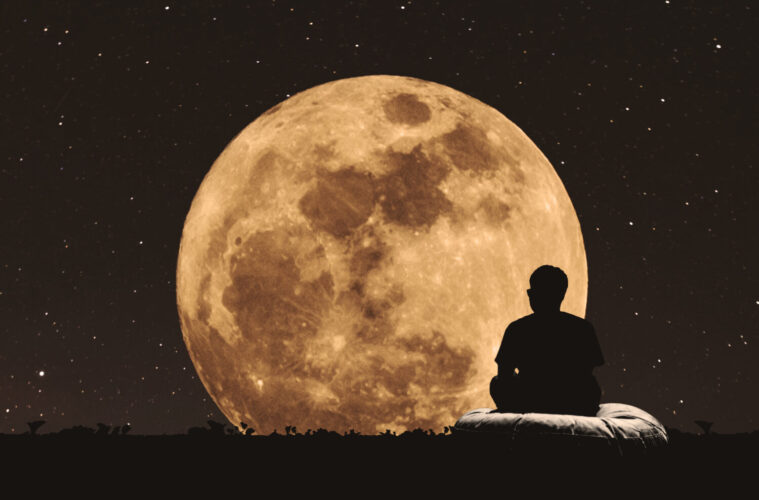Suicides need to be talked about more — but finding ways to prevent suicides is even more important. One solution is by discussing with your loved ones if you have suicidal ideations. On the other hand, reaching out to those whom you think are in trouble should also be done. But learning some of the causes of suicides can also be a solution. Recently, scientists came up with another hypothesis as to why there’s an increase in suicides whenever there’s a full moon — this phenomenon, apparently, has been happening for thousands of years.
The Correlation Between Lunar Events and Full Moon Suicide
Has the full moon always been observed to contribute to the increase in suicides or mental illnesses?
The phenomenon of full moon suicide may have been noticed as early as the Roman times. Philosophers Aristotle and Pliny the Elder argued that the “nocturnal dew” was what caused lunacy and epilepsy during the full moon phase.
Though we can no longer trace who coined the word “lunatic,” the Merriam-Webster dictionary’s written etymology of the word is, “Middle English lunatik, from Anglo-French or Late Latin; Anglo-French lunatic, from Late Latin lunaticus, from Latin luna; from the belief that lunacy fluctuated with the phases of the moon,”
Sir William Blackstone also wrote in the 18th century, “A lunatic, or non compos mentis, is one who hath . . . lost the use of his reason and who hath lucid intervals, sometimes enjoying his senses and sometimes not, and that frequently depending upon the changes of the moon,”
Who are the ones at risk for suicidal ideations?
Medicine has massively evolved over the millennia. These days, we’re now aware that there are different types of mental illnesses. Therefore, they’re no longer purely defined as “lunacy.” Moreover, “suicidal ideations” is only one sign/symptom — and it’s typically not the root cause itself.
More often than not, it’s caused by a mental disorder that needs to be addressed. And suicidal ideations can stem from different forms of mental illness — such as PTSD, Depression, Bipolar Disorder, Anxiety Disorder, Eating Disorder, and many more.
Furthermore, there can also be an increase in full moon suicide — or suicide in general — among those who deal with these conditions:
- Substance abuse
- Chronic pain
- Physical disability
- Stressful life crisis (such as financial problems or homelessness)
- Mental or physical abuse
- Loss of a person significant to them (break ups, divorce, or death)
Is the full moon’s contribution to the increase in suicides merely a myth?
Even modern medicine continues to witness the increase in suicides among people during the full moon phase — with some studies dating back to the ‘70s. However, recently, physicians from the Indiana University School of Medicine sourced hundreds of data from Indiana’s Marion County Coroner’s Office to come up with a hypothesis if the occurrence of a full moon and its correlation to the increase in suicides are purely a myth — or if there’s a compelling reason behind the phenomena.
What the psychiatrists noticed was there’s indeed a significant increase in suicides among those who are at risk for committing it during the week of a full moon. Sometime around 3:00 PM to 4:00 PM are also the most common hours of the day when suicides are more likely to be committed — and September is the peak month for suicides to occur.
Have scientists discovered why this occurs?
The university’s psychiatrists published their journal in Discover Mental Health — and there, it says that, from what they believe, the reason why the full moon phase increases suicide occurrences is that the body’s circadian rhythm (or the body’s natural body clock) gets somewhat thrown off by the sudden increase in light — and the body feels more stressed out by the moonlight.
As for why hours near (or around) 3:00 PM to 4:00 PM are the most common hours for suicides, psychiatrist Prof. Alexander Niculescu believes that a person’s daytime stressors may have something to do with it — as well as the circadian clock having to adjust to the gradually-decreasing sunlight.
Furthermore, the physician and his team conclude that September is the most common month for suicides because the hours where daylight occurs begin to decrease during this period. Additionally, since September is a month when summer vacation ends, it can induce stress among people.
All in all, Dr. Nilescu states, “Our work shows the full Moon, fall season and late afternoon are temporal windows of increased risk for suicide, particularly in those who suffer from depression or alcohol-use disorders,” their next step is to study whether or not the lights from people’s gadgets when they use it at night contribute to suicides — especially among younger people.
Last but Not Least,
These days, it’s widely believed that stress and mental health illnesses can contribute to the increase in suicides. Recently, psychiatrists at the Indiana University School of Medicine noticed a pattern where the full moon period, the month of September, and late afternoons also make high-risk people more vulnerable to suicidal ideations and, sadly, suicides — they believe that it’s because people’s body clocks get thrown off by the daylight and moonlight oddities.
*If you’re having suicidal ideations, tell a friend or loved one about it, talk to your therapist, or call The National Suicide Prevention Lifeline: 1-800-273-TALK (8255). California residents can check out their local county’s mental health crisis intervention hotlines here.
Advertising disclosure: We may receive compensation for some of the links in our stories. Thank you for supporting LA Weekly and our advertisers.

